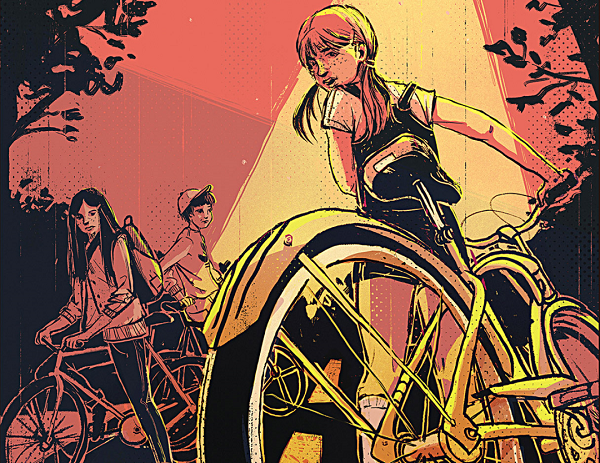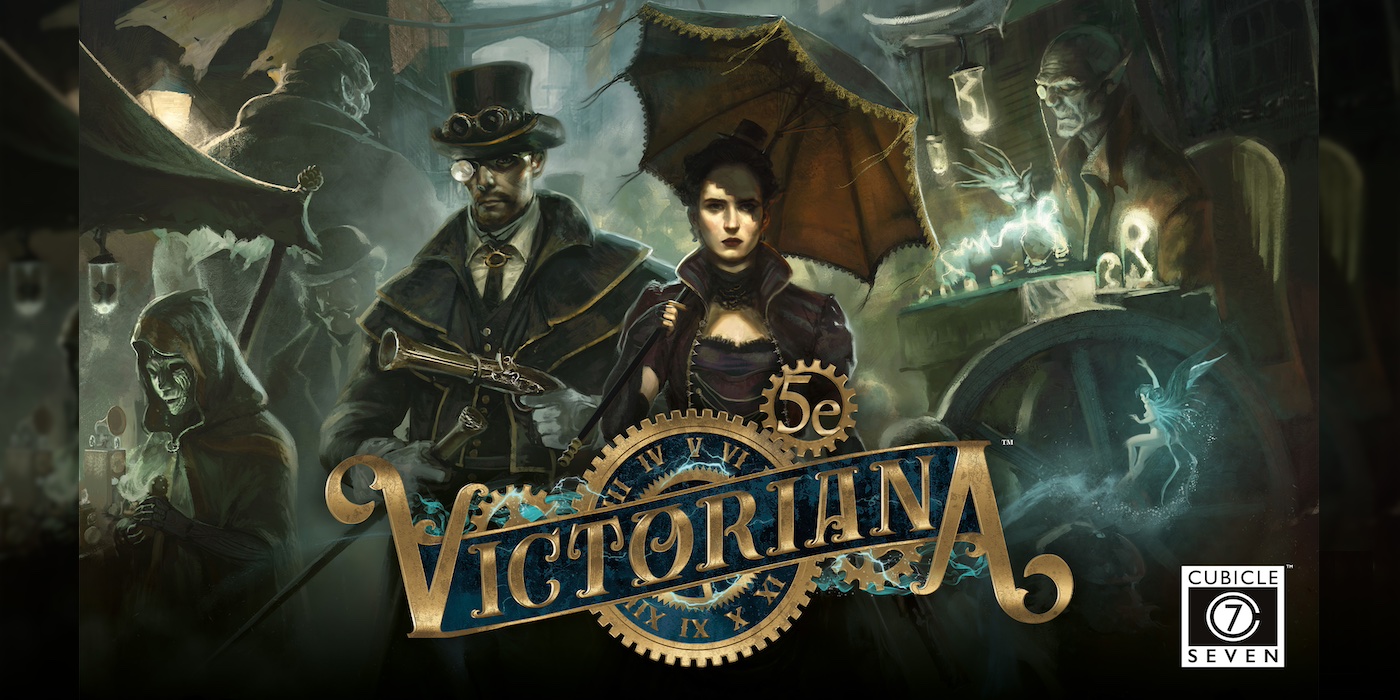RPG Spotlight: ‘Kids on Bikes’ Brings 80’s Nostalgia and Kid Adventures to your Table
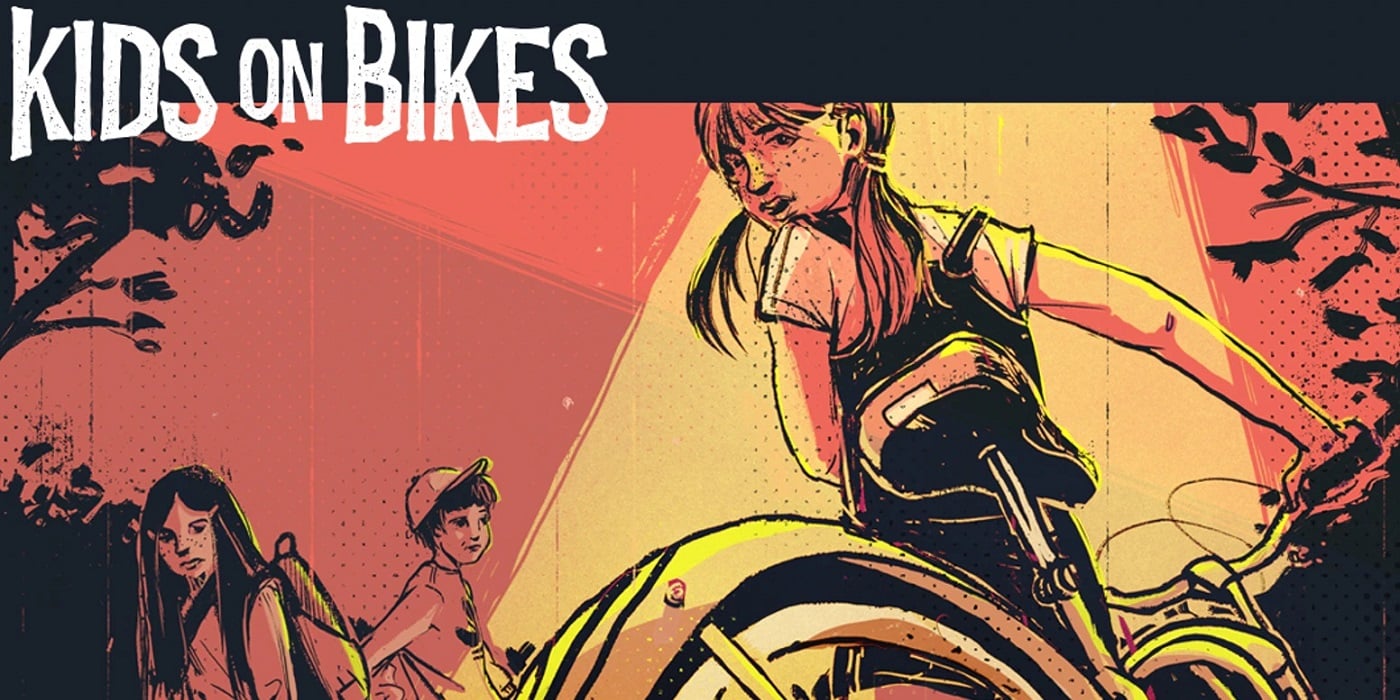
Monsters, local government conspiracies, and a giant wallop of nostalgia give Kids on Bikes its distinct ‘Stranger Things‘ feel.
The ‘kids on bike’ genre or trope has been a popular one since the 1980s. You know the one. Small-town kids get into trouble, uncover some gigantic mystery, and manage to outsmart all of the grownups in town while using nothing but their bikes and wits to get around.
Things like E.T. and The Goonies made this trope famous. But more recently, Stranger Things kicked it up to eleven. Well, you can mimic that exact feeling with a tabletop RPG by picking up your own copy of Kids on Bikes.
Kids On Bikes
First published in 2018 after a successful Kickstarter campaign, Kids on Bikes is a short, simple, and delightful look at the kids’ sometimes supernatural adventures in a small-town genre.
The game is written by Doug Levandowski and Jonathan Gilmour and published by Renegade Game Studios. And this game of “strange adventure in small towns” enjoyed so much success that it inspired a magic school spinoff in Kids on Brooms and even a space-based spinoff with Teens in Space.
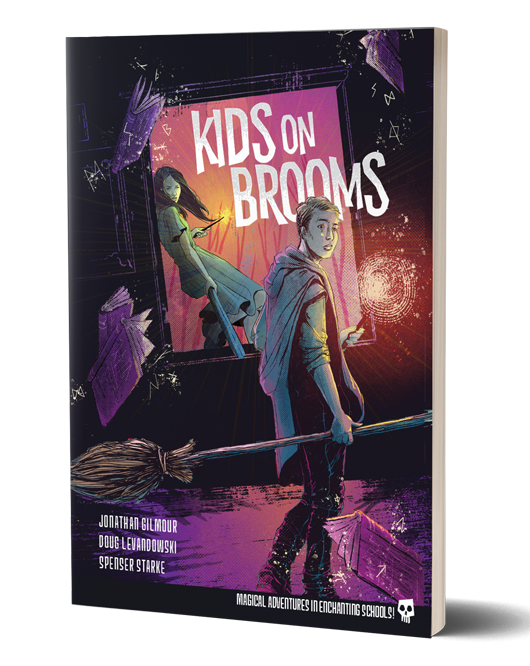
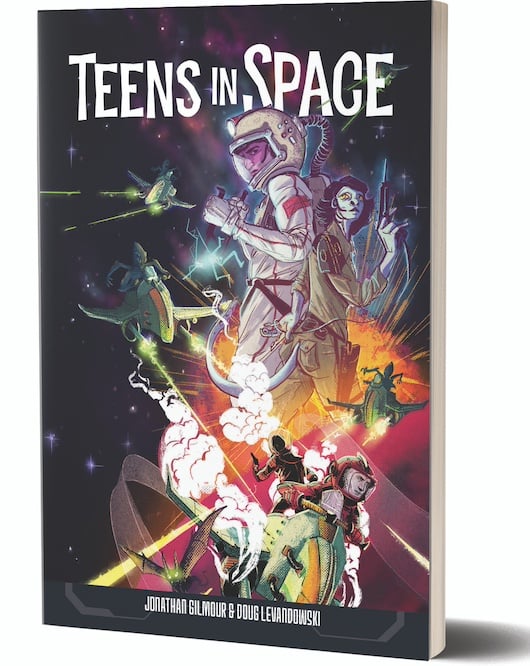
The idea of the game is simple enough, especially if you’re familiar with the inspiring trope. Everyone plays a kid, and together, the team works collaboratively to solve their town’s big mysteries. You become the pint-sized heroes of your small town’s big adventure.
Character Creation & Game Play
Character creation is a simple one-page affair. Choose your name, age (despite the title, you can play as a child, a teenager, or an adult), greatest fear, motivations, flaws, and strengths. Strengths include things like Cool Under Pressure, Heroic, and Quick Healing, and include a blank space labeled “Skilled At.” Because every kid has some weird special thing they’re good at.
Stats are Fight, Flight, Brains, Brawn, Charm, and Grift, and you get to assign your own skill level to each of these! The level you assign yourself in each of these stats is equal to a die with one assigned to each stat. No repeats are allowed. When rolling for that stat, you will roll the assigned dice.
For example, a bookish-but-physically-weak character will probably have the D20 assigned to Brains while the D4 may be assigned to Brawn. When rolling a research or knowledge check, they will roll that D20. But when trying to lift a heavy tool and they would roll the D4.
Checks like these aren’t impossible, however, as rolling the highest possible number on a given die causes it to ‘explode’ and allows the player to roll again and add these numbers together. It is possible to explode multiple times per stat check. If that check to lift the heavy tool had a difficulty level of 7, my brainy character with a D4 strength would have to roll a 4 and then at least a 3 in order to succeed. Difficult, but not impossible.
World Building in Kids on Bikes
Once you’ve created your character, it’s time to introduce them to the group and start creating the world. That’s right, you, the player, take a very active role in creating the town you live in. The players and GM run through basic setting questions to come up with the town name, description, location, and rumors about the town. From here, the GM will begin walking you through whatever alien invasion/government facility/pirate treasure shenanigans the players will get up to.
When done well, group character creation like this really does make the game feel like it takes place in a small town. The goal is to mimic the sense that you’ve lived in this town for your entire life. Your family has probably lived there for generations. You know this town like the back of your hand, and you can bike from one end to the other in less than half an hour because you know all of the best shortcuts and worthwhile stops along the way.
Leaving the world very open can leave a lot of improv on the shoulders of the GM. Maybe your town rumors will line up with the plot they had in mind, but maybe they won’t, and they’ll need to come up with something else on the fly. Or perhaps they’ll be forced to do a little mental gymnastics to make everything fit together. And we all know a GM or two who thrive in those conditions.
Powers
And of course, Kids on Bikes wasn’t going to draw inspiration from the genre that brought us E.T. and Stranger Things and leave out E.T. or El! The “Powered” character is one of the most interesting concepts in this game as a pseudo-NPC and pseudo-player usable mechanic.
This character is added to your party and has traits provided by the GM, ranging from personality quirks to superpowers, but the players are able to narrate how this character acts and what they will do. When the powered NPC exhibits traits described on one of the cards, the player with that card gets to take over the power and narrate how they will act.
Kids on Bikes has enjoyed great success thanks to its unique nature, fun gameplay, and ability to bank on nostalgia and our combined desire to get back to biking with our friends after school.
Kids on Brooms, of course, allows you to create and navigate life in a magical school or witches and wizards, face magical monsters, solve campus secrets, and master magic.

Dimension 20
The nineteenth season of Dimension 20, Mentopolis, utilized the Kids on Bikes system… sort of. Dimension 20 used the system as a base and noir-ified it to fit a little better with the campaign’s theming. This gives the game a distinct 80s pop-culture flavor and very plot-and-character-driven sessions. Similarly, the show’s tenth season, Magic and Misfits, used the Kids on Brooms system. In that case, however, no changes were made as it was a magic-school-themed adventure.
If you haven’t played Kids on Bikes yet, it’s well worth checking out. It’s ideal for one-shots or shorter campaigns, and with its simple rules and creativity-encouraging nature, it is a fantastic game for convincing a friend to give tabletop RPGs a try. Visit the Renegade Game Studios site to grab a copy for yourself.
Have you played Kids on Bikes? Will you be picking up Kids on Brooms this summer? Which kids-on-bikes genre movie/show/comic is your favorite? Let us know in the comments!
Happy adventuring!

